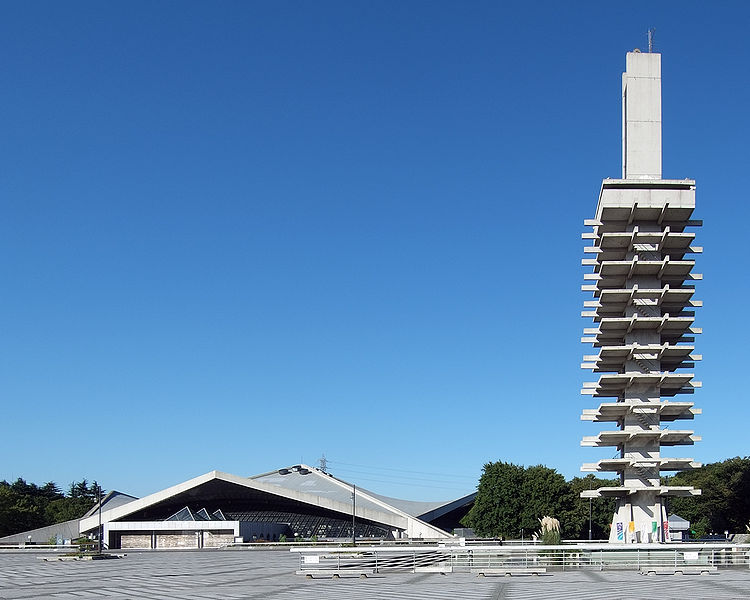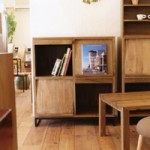駒沢オリンピック公園Komazawa Olympic Park

Photo: Wiiii / CC BY-SA 2.0
Tucked away in one of the bohemian hearts of Tokyo, the upscale residential district Setagaya, this precious respite from the city’s hustle and bustle continues to retain a resilient, stubborn charm, holding up the sporting legacy it inherited東京の中心エリアのひとつとしてひっそりと位置する世田谷エリア。その高級住宅地として知られる、都市の喧噪から離れた場所に、1964年に東京で開催されたオリンピック会場として受け継がれたスポーツの遺産が残されている。自由な精神とクリエイティビティを持ち合わせた匿名ストリート・アーティスト達によって丹念に描かれたグラフィティー・トンネルや無骨な壁がある、駒沢オリンピック公園は、大都市東京の雑踏とは打って変わった雰囲気で訪れるものを迎え入れる。公園の西口を渡るとキュートでシックなカフェやレストランが立並ぶ。この緑で覆われた公園はそんな素敵な場所に佇み、わずかな静寂を必要とする人々のための素敵な逃げ場として役立っている。
![]()
台東区にある上野公園と比べ、観光客には恐らく余り知られていないが、この穏やかな公園は通りすがりの観光客や住民が日本の四季を楽しめる場所でもある。春は、控えめなピンクと白の色合いの桜が咲き乱れ、真っ先に生命の息吹を知らせてくれる。夏には、みずみずしく繁茂した葉陰が東京の暑さと湿気から守ってくれる。秋には木々の葉が赤や黄色、オレンジなどの情熱的な色に赤らみ、空や周囲がしだいに燃え盛るかの様。さらに冬は、微弱な日差しが木々の間を通り抜け、寒さと対照に木々は堂々と高くそびえ立つ。一方、枯れ葉は居心地よく根に集まっている。カラスが慎重に止まった木々は、ペールブルーの空の下にそびえ立ち、ゴシック風な美しさを醸し出す並木道を作っている。
![]()
ジョギングやサイクリングをする人の他、アスリートのための広大なトラックもある公園内には、多くのベンチが設置されていて、人間ウォッチングにも最適。また、作家やアーティストを目指す人々がインスピレーションや安らぎを求めるための崇高な場所でもある。ここでは異なるコミュニティや国の人々が偶然に集い、日本語、英語、中国語とさまざまな言語で会話し、彼らは子供達にスケートや凧揚げ、自転車の乗り方を教えている。国際的に有名なアスリート達が記録を破って歴史に名を残した記念碑のオリンピックタワーが公園の中央にあり、近くでは年少のサッカーチーム、バドミントン、ベースボールプレイヤーが練習に勤しみ、午後の太陽の下、精力的にジョギングをする人々や若者で賑わいをみせている。時折ミュージシャンたちがここに集い、広大な空を通リ抜けた風が、彼らの奏でたサウンドを運んでくれる。
![]()
公園内にある体育館に位置する東京オリンピック・メモリアルギャラリーは、1964年に開催されたオリンピック東京大会により近代都市へと変化した東京の様子を伝えている。世界初のテレビ生中継で放送し、画期的な出来事を引き起こしたのが東京大会だった。オリンピック大会が行われることで、ゴルフコースだった公園は、アスリートのための世界的なスポーツ会場へと変貌をとげた。このオリンピックのアイコンでもある公園は、日本のテレビ番組や映画の撮影で時々使われ、公園の周辺区域にまで及んだ東京の急速な発展や変化を含め、今後の東京にその永遠に存在する景色を再確認させてくれる場所だ。
![]()
駒沢オリンピック公園
住所:東京都世田谷区駒沢公園1-1
TEL:03-3421-6431
http://www.tef.or.jp/kpark/
![]()
Text: Bonnie Oeni
Translation: Megumi Tsuruoka as an Olympic venue for the city in 1964. With its rugged walls and tunnels graffitied over elaborately by anonymous street artists in a show of free-spirited creativity, Komazawa Olympic Park is a welcome change from the crowds and flurry of activity in metropolitan Tokyo. Cute, chic cafes and restaurants lined up across the west entrance of the park signal that this leafy alcove is located in a unique, slightly offbeat district, serving as a good escape spot for those who need to find a little tranquility.
![]()
Perhaps lesser known to tourists compared to its Taito cousin, Ueno Park, this serene park can clearly showcase Japan’s four distinct seasons to the casual tourist, or curious city-dweller. In spring the sakura trees burst into shy shades of pink and white, signalling the first blush of life, while in summer they provide lush, luxuriant shade from the notorious heat and humidity in Tokyo. In autumn the leaves are flush with fierce colours of red, yellow and orange, seemingly setting the sky on fire as the crescendo to the upcoming ballad of winter. Yet even in the winter, with the fading sunlight streaming through the trees, the trees retain a stoicism against the cold, standing tall and imposing while withered leaves gather snugly at their roots. With crows perched warily on tree branches, the tree-lined sidewalks obtain an almost Gothic-like beauty under the pale blue sky.
![]()
With plenty of benches located in the park, spacious tracks for joggers and cyclists, as well as activity spaces for sports practitioners, this park is also a great place to people-watch, for aspiring writers or artists seeking inspiration and some quietude. Here, people from different communities and nationalities gather by chance, speaking a variety of languages from Japanese to English to Mandarin as they skateboard, fly kites, or teach their children how to ride a bike. Young soccer teams, badminton and baseball players practise in front of the park’s central monument, the Olympic Tower, or old Olympic facilities, where renowned international athletes have broken records and gone down in history, providing timeless inspiration for aspiring youths, and for joggers pushing themselves to the limit under the strain of the afternoon sun. The occasional musician can also be found here, the winds carrying his sound through the wide open skies.
![]()
The Olympic Memorial Gallery, located in the gym of the park’s stadium, also offers a stirring visual display of how Tokyo was transformed into a modern city for the Games in 1964, which set a milestone for being the world’s first Olympics to be televised live. Along with the Games, the park was transformed from being a golf course to a world-class sporting venue for athletes all around the world. This iconic park has occasionally been used for filming in Japanese TV shows and films, reassuring its enduring background presence in Tokyo’s future even as Tokyo’s rapid progress and change encroaches into the park’s surrounding areas.
![]()
Komazawa Olympic Park
Address: 1-1 Komazawa Park, Setagaya-ku, Tokyo
Tel: 03-3421-6431
http://www.tef.or.jp/kpark/
![]()
Text: Bonnie Oeni驹泽奥运会公园
地址:東京都世田谷区駒沢公園1-1
电话:03-3421-6431
http://www.tef.or.jp/kpark/
![]()

